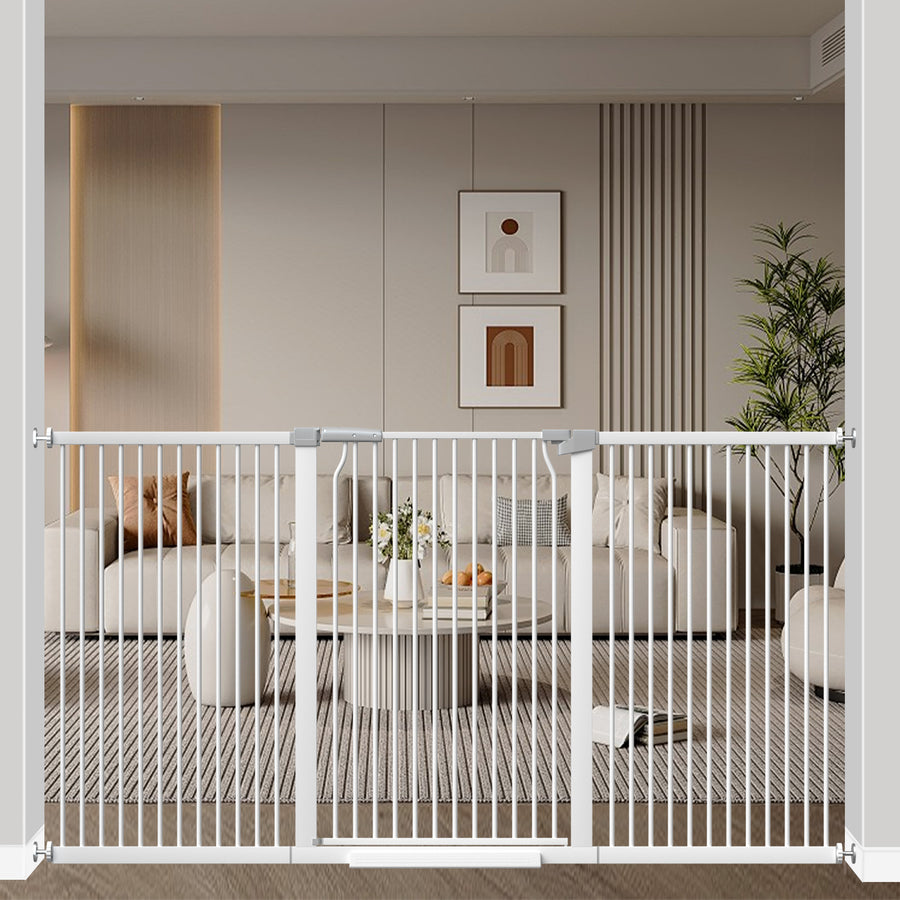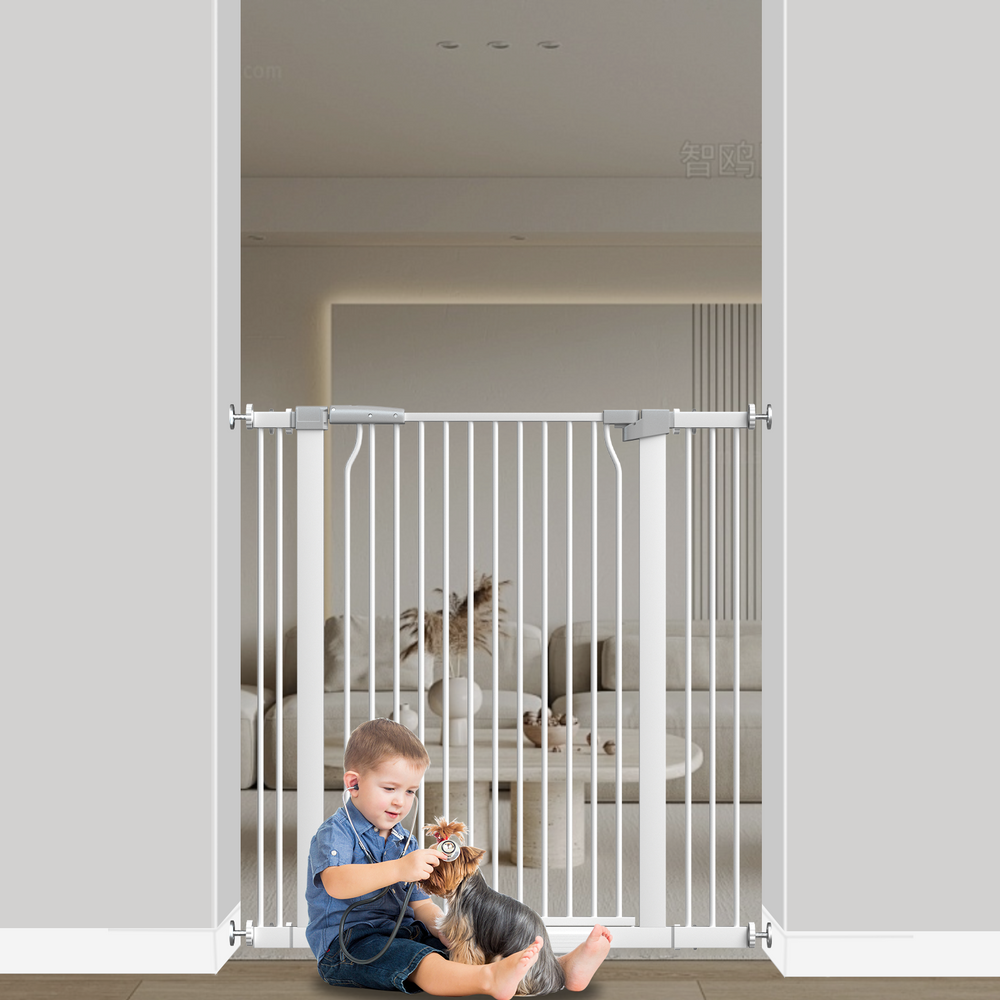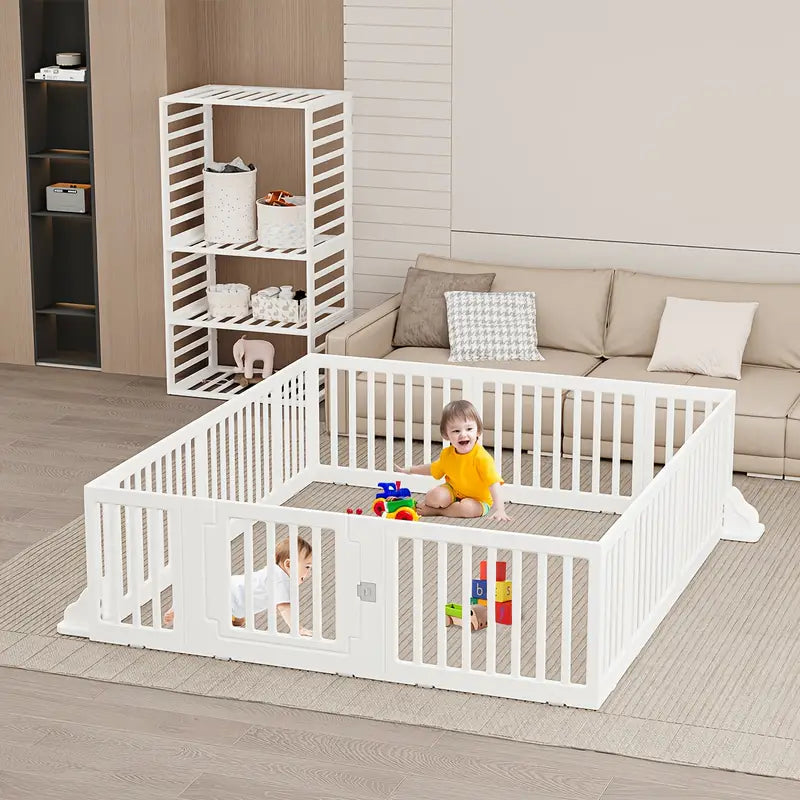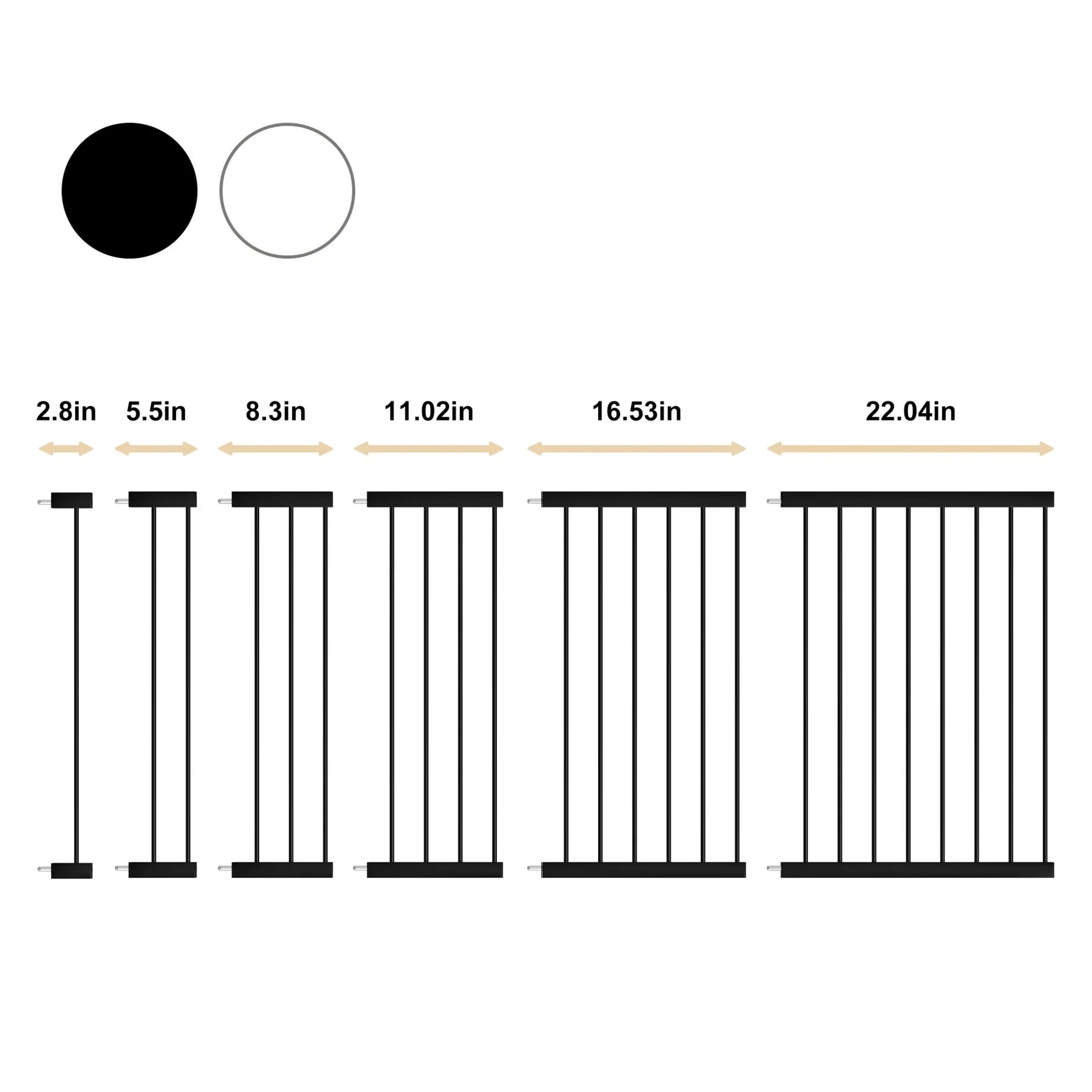Essential Tips for Choosing Safe Toys for Babies: A Parent's Guide
Prioritize Safety When Choosing Safe Toys for Babies
Okay, so you're about to buy some toys for your baby. Awesome! But before you grab the cutest thing you see, let's talk safety. It's not just about fun and games; it's about making sure your little one is protected. Every year, tons of kids end up in the ER because of toy-related injuries. We want to avoid that, right? So, let's get into some simple steps you can take to make sure the toys you bring home are safe for your baby.
Look for Safety Certifications
When you're browsing for toys, keep an eye out for safety certifications. These certifications mean that the toy has been tested and meets specific safety standards. It's like a seal of approval saying, "Hey, this toy isn't going to fall apart and hurt your kid." Look for things like ASTM International or EN71 markings. These show that the toy has been put through the wringer and passed. It's a good first step in making sure you're buying something safe. It's also important to note that these certifications aren't foolproof, but they add an extra layer of confidence.
Avoid Recalled Products
Toy recalls happen, and they happen more often than you might think. Companies recall toys for all sorts of reasons, from choking hazards to toxic materials. Before you buy anything, take a quick peek at the recall lists from organizations like the Consumer Product Safety Commission (CPSC). It only takes a minute, and it could save you a lot of heartache. You can usually find this info on their website. Also, sign up for email alerts so you know right away if a toy you already own gets recalled. It's better to be safe than sorry.
Inspect for Small Parts
Babies explore the world with their mouths. It's just what they do. That means anything small enough to fit in their mouth is a potential choking hazard. Before you hand over a toy, give it a good once-over. Are there any small parts that could come loose? Buttons, eyes, little plastic pieces? If so, ditch the toy. It's not worth the risk. Also, think about the toy's construction. Is it sturdy? Could it break easily and create small, sharp pieces? If you're not sure, err on the side of caution and choose something else. Remember, choking hazards are a big deal, so take this seriously.
Choosing safe toys is a big responsibility. It's not just about finding something fun; it's about protecting your baby from potential harm. Take the time to do your research, inspect the toys carefully, and stay informed about recalls. Your baby's safety is worth the extra effort.
Select Non-Toxic Materials for Baby Toys
It's super important to think about what baby toys are made of. Babies explore the world by putting things in their mouths, so you want to make sure those toys aren't full of yucky chemicals. Choosing toys made from safe materials can really reduce your baby's exposure to harmful substances.
Choose Natural Materials
When you can, go for toys made from natural stuff. Think cotton, wool, or even uncoated wood. These materials are often a safer bet than plastics, which can sometimes contain questionable additives. Plus, they often feel nicer too! I remember when my little one was a baby, I always preferred the feel of a wooden toy over a plastic one. It just felt more wholesome, you know?
Check for Chemical Safety Labels
Always be on the lookout for labels that tell you about the chemicals (or lack thereof) in a toy. "BPA-free" is a good one, and so is "non-toxic." If you see a certification seal, like ASTM or CE, that's another good sign. It means the toy has been tested to meet certain safety standards. Paints, crayons, markers, and other art supplies should be labeled “non-toxic.” (Materials marked with the designation ASTM D-4236 means the product was reviewed by a toxicologist.)
Avoid Vintage Toys with Lead
Vintage toys can be super cute, but it's best to avoid them, especially wooden ones with chipped paint. Older paints sometimes contained lead, which is definitely something you don't want your baby chewing on. It's just not worth the risk, even if that antique rocking horse looks adorable. If you're unsure, it's always better to err on the side of caution and stick with newer toys that meet current safety standards.
It's a good idea to regularly check for toy recalls. Even if you've done your research and bought what you thought was a safe toy, sometimes problems are discovered later on. Staying informed can help you protect your little one from potential hazards.
Follow Age Requirements for Toy Selection

It's easy to get caught up in buying the cutest or most popular toys, but age recommendations are there for a reason. They're not just suggestions; they're guidelines designed to keep your baby safe and engaged. Following age requirements is a simple way to minimize risks associated with choking hazards or developmental mismatches.
Understand Developmental Stages
Babies and toddlers go through rapid developmental changes. What's appropriate at 3 months is very different from what's suitable at 12 months. Toys designed for older kids might have features or complexities that are frustrating or even dangerous for younger ones. For example, a toy with small, intricate parts might be perfect for a 4-year-old but a serious choking hazard for a baby. Understanding these stages helps you choose toys that support their growth without posing unnecessary risks. Consider developmental toys that match your child's current abilities.
Check Age Labels on Packaging
Toy manufacturers put age labels on their products for a reason. These labels aren't arbitrary; they're based on safety testing and developmental considerations. Always take a moment to read the label before buying a toy. It's a quick and easy way to ensure that the toy is appropriate for your child's age and abilities. Don't assume that a toy is safe just because it looks harmless. The age label is your first line of defense. Make sure to check for age-appropriate labels before purchasing any toy.
Avoid Toys with Small Parts for Infants
Infants explore the world with their mouths. It's how they learn and experience new things. Unfortunately, this also means that small parts can easily become choking hazards. Toys with detachable pieces, small batteries, or other tiny components should be avoided at all costs for babies and toddlers. Even if a toy seems sturdy, inspect it carefully for any parts that could potentially break off. Prevention is key when it comes to choking hazards.
It's better to err on the side of caution when choosing toys for infants. If you're unsure about a toy's safety, it's best to choose something else. There are plenty of safe and engaging toys available for every age group. Don't take unnecessary risks with your child's safety.
Avoid Crib Toys to Ensure Safe Sleep
It's super tempting to fill a baby's crib with cute, cuddly toys, but when it comes to sleep, less is definitely more. The primary goal is to create a safe sleep environment, and that means keeping the crib free from potential hazards. We're talking about anything that could increase the risk of suffocation, strangulation, or entrapment. It might seem harsh, but it's all about prioritizing your baby's safety during those crucial sleep hours.
Keep Soft Objects Out of Cribs
This one's pretty straightforward. Soft toys, blankets, pillows, and even crib bumpers might look cozy, but they pose a suffocation risk for infants. Babies don't have the strength or coordination to move these items away from their faces if they get stuck. It's best to stick to a firm mattress with a fitted sheet. You can use a wearable blanket to keep your baby warm without the dangers of loose blankets.
Remove Hanging Toys as Baby Grows
Mobiles and crib gyms are great for entertaining a baby who's awake, but they need to go once your little one starts pushing up on their hands and knees or reaches five months old. These hanging toys become a strangulation hazard as babies become more mobile and can grab at them. It's a good idea to transition to floor-based toys around this time. I remember being so sad to take down the mobile, but safety first, always!
Understand Risks of Crib Accessories
Crib accessories like positioners and wedges were once popular, but now experts advise against using them. These products haven't been proven safe and can actually increase the risk of suffocation. The safest sleep position for a baby is on their back, on a firm, flat surface, with no extra stuff in the crib. It's hard to resist all the cute things marketed for babies, but sometimes the simplest setup is the safest. Always check for product safety recalls before purchasing any baby product.
Creating a safe sleep environment is one of the most important things you can do as a parent. It might mean sacrificing some of the cute decorations, but it's a small price to pay for your baby's safety and well-being. Remember, a bare crib is a safe crib.
Be Aware of Choking Hazards in Toys

It's super important to think about choking hazards when you're picking out toys for your baby. Babies explore the world by putting things in their mouths, so you need to be extra careful. It's not just about age recommendations; you've got to be a detective, looking for potential dangers.
Inspect for Small Detachable Parts
Okay, so this one seems obvious, but really get in there and check. Are there any little pieces that could come off easily? Buttons, eyes on stuffed animals, anything like that. Give the toy a good tug and twist. If something seems loose, ditch the toy. It's better to be safe than sorry. I remember this one time my nephew was playing with a toy car, and the wheel popped off. Luckily, my sister saw it happen, but it was a close call.
Choose Larger Toys for Safety
Think big! Anything that can fit completely in your baby's mouth is a no-go. A good rule of thumb is if it can fit through a toilet paper roll, it's too small. It's easy to underestimate how much a baby can actually fit in their mouth. I know it sounds crazy, but it's true. Also, keep older kids' toys away from the baby. What's safe for a five-year-old might be a huge risk for a six-month-old. You can find toy storage solutions to help with this.
Educate on Safe Play Practices
Okay, so your baby isn't going to understand a lecture on toy safety, but you can educate older siblings and caregivers. Make sure everyone knows the rules about small parts and keeping an eye on the baby during playtime. It's also a good idea to learn basic first aid for choking. Hopefully, you'll never need it, but it's good to be prepared. I took a choking prevention class a few years ago, and it really made me more aware of potential dangers.
It's easy to get caught up in wanting to buy the cutest or most educational toys, but safety always comes first. Take a few extra minutes to inspect toys and think about potential hazards. Your baby's health is worth it.
Stay Informed About Toy Recalls
It's easy to think once you've bought a toy, you're all set. But things change! Sometimes, even after toys are on the market, problems pop up. That's why staying on top of toy recalls is super important. It's a key way to keep your kids safe from potential hazards.
Regularly Check Recall Lists
There are a bunch of places to find recall info. The Consumer Product Safety Commission (CPSC) is a great place to start. They have a website where you can search for recalls. Also, many big retailers will post recall information on their websites or in stores. Make it a habit to check these sources regularly, especially if you're buying a lot of toys around the holidays. You can even sign up for email alerts so you don't miss anything. It's also worth checking out other consumer safety websites, too. The more sources you check, the better!
Know How to Report Unsafe Toys
If you find a toy that seems unsafe, don't just throw it away. Report it! The CPSC has a system for reporting unsafe products. Your report could help prevent other kids from getting hurt. Be as detailed as possible when you report. Include the toy's name, model number, where you bought it, and what the specific problem is. The more information you give, the easier it is for the CPSC to investigate. It's a simple thing that can make a big difference.
Follow Updates from Safety Organizations
Besides the CPSC, there are other organizations dedicated to toy safety. Groups like the American Academy of Pediatrics often have articles and updates about toy-related dangers. Following these organizations on social media or subscribing to their newsletters can keep you in the loop. They often provide helpful tips and advice that you might not find elsewhere. Plus, they can help you understand the reasoning behind certain safety guidelines. For example, understanding the risks of button battery injuries can help you make informed decisions.
It's easy to get overwhelmed by all the information out there, but remember, even a little bit of awareness can go a long way. By staying informed and taking a few simple steps, you can create a much safer play environment for your kids. Don't assume that just because a toy is on the shelf, it's automatically safe. Do your homework, and be proactive about safety.
Here's a quick rundown of places to check for recalls:
- CPSC website
- Retailer websites
- Manufacturer websites
- Consumer safety blogs
- Social media (look for official safety organization accounts)
And remember, if you ever have any doubts about a toy's safety, it's always better to err on the side of caution. Take it away from your child and do some research. It's not worth the risk!
Evaluate the Quality of Toys Before Purchase
It's easy to get caught up in the excitement of buying new toys, but taking a moment to assess their quality is super important. You want toys that will last and, more importantly, won't pose any immediate dangers to your little one. A well-made toy is a safe toy.
Look for Sturdy Construction
I always give toys a good once-over before buying them. I'm talking about tugging at seams, checking how well things are glued together, and generally seeing if it feels like it can withstand some serious toddler-level abuse. If it feels flimsy in the store, it definitely won't last long at home. Look for toys made from durable materials that can handle being dropped, thrown, and chewed on.
Avoid Toys with Sharp Edges
This one seems obvious, but it's easy to miss small, sharp points or edges, especially on plastic toys. Run your fingers along all the edges and surfaces. If anything feels even remotely sharp, put it back. Babies explore the world with their mouths and hands, and the last thing you want is for them to get cut or scratched. I've seen some toys with surprisingly pointy bits that could easily cause an injury. It's also worth checking for any small parts that could break off and become a choking hazard.
Ensure Washability of Fabric Toys
Let's face it: baby toys get gross. They end up covered in drool, food, and who-knows-what-else. Being able to easily wash fabric toys is a must. Check the label to see if it's machine washable. If not, consider whether you're willing to hand-wash it regularly. I prefer toys that can go in the washing machine for easy cleaning. Also, think about the fabric itself. Is it a material that will hold up well to repeated washings? Fading and pilling can happen, but you want something that will stay in decent shape after a few cycles. Regularly checking recall lists is also a good idea.
I always try to buy toys that are easy to clean. It makes life so much easier when you can just toss something in the washing machine instead of having to scrub it by hand. Plus, it helps keep germs at bay, which is always a win when you have a baby.
Wrapping It Up: Keeping Playtime Safe
Choosing safe toys for your baby doesn’t have to be a headache. Just remember to look for safety labels, avoid small parts, and stick to age-appropriate toys. It’s also smart to check for recalls and steer clear of any toys made with harmful materials. Keep an eye on what your little one is playing with, and don’t hesitate to toss out anything that seems risky. At the end of the day, the goal is to make playtime fun and safe. With these tips in your back pocket, you can feel good about the toys you bring home.






Leave a comment